Spectacular Scenery and Gourmet Food with the Tanzawa-Oyama Freepass

Mt. Oyama, which has long been revered as a subject of mountain worship, remains popular as a powerful spiritual spot. We would like to recommend you use the Tanzawa-Oyama Freepass whether it be for sightseeing or hiking.
In addition to being able to freely get on and off of the Odakyu Line and Kanagawa Chuo Kotsu Buses, you can also select whether or not you will use the Oyama Cable Car, making it convenient for anyone to purchase according to their planned route!
The ticket is even more cost-effective if you make sure to take the Odakyu Line in coming here and when returning, which also allows you to enjoy various modes of transport and the scenic routes along the way in addition to the destinations themselves.
We would like to introduce our 1- to 2-day recommended itinerary for visiting Oyama Afuri-jinja Shrine and Oyama-dera Temple, where you can enjoy wonderful views and delicious tofu cuisine!
Departure from Shinjuku Station
Board the Limited Express Romancecar from Shinjuku. After enjoying the view slowly transitioning from the city and suburbs to the countryside, you will arrive at Isehara Station after about 50 minutes. Board the Kanagawa Chuo Kotsu Bus at the number 4 bus boarding terminal by the North Exit, and proceed to the last stop, “Oyama Cable.”

Odakyu Isehara Station
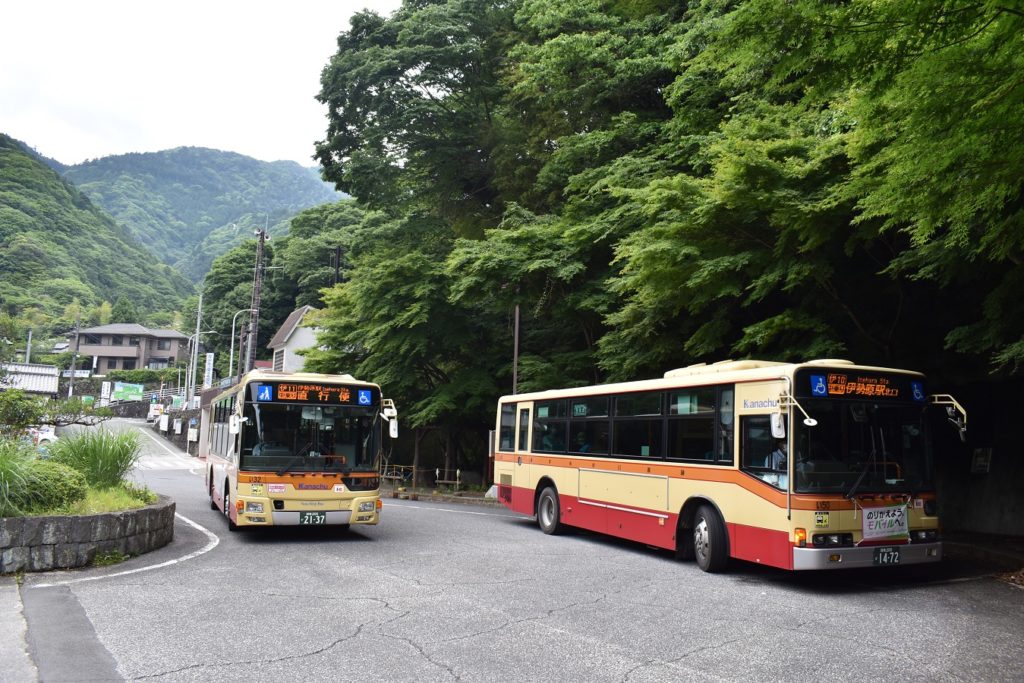
”Oyama Cable” Bus Stop
Retro Sightseeing Spots / Koma Sando

A street bustling with elegance, Koma Sando is the path that connects the bus stop to the Oyama Cable station (Lower Station).
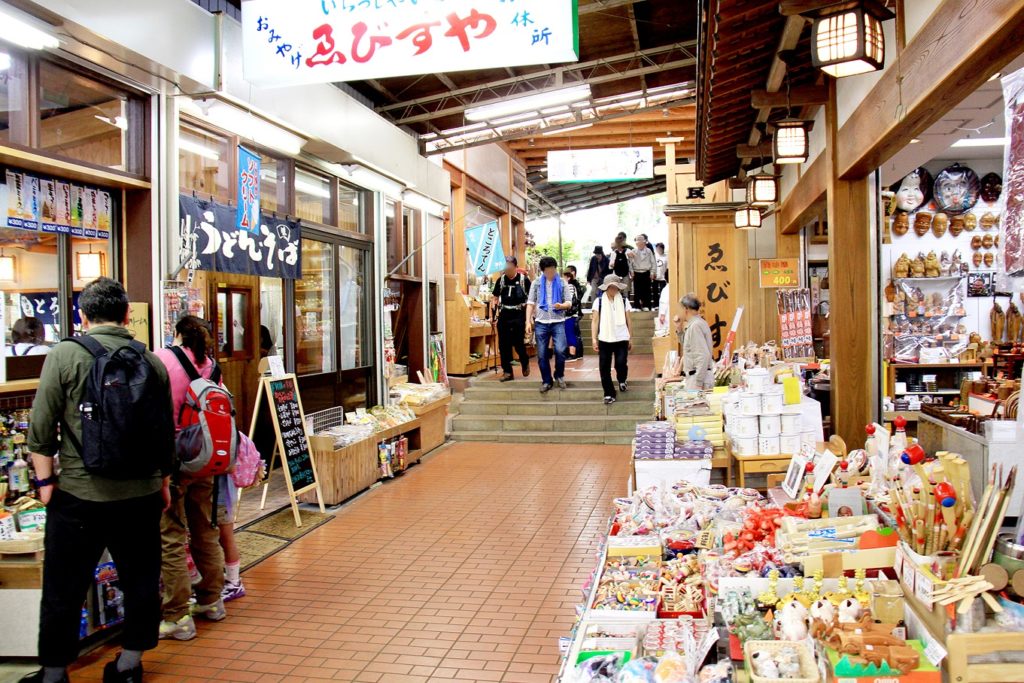
Photo:Isehara tourist association
A pleasant 15-minute walk that makes you feel like you’re on a trip. Take your pick from a selection of gifts including famous local souvenirs, such as Oyama-koma (spinning tops), Oyama tofu (bean curd dishes), or even some Oyama Kyara-buki (butterbur in soy sauce).
A Specialty of Oyama, Satisfying Tofu Cuisine / Tofu-dokoro Ogawaya


After wrapping up your walk along Koma Sando, try visiting this restaurant near Oyama- Cable Station that specializes in tofu dishes! Originally a lodging house, this restaurant has a relaxed atmosphere and serves authentic seasonal dishes with tofu on the forefront. From fall until spring you can enjoy a special wild boar hot pot (by reservation only) that uses meat from wild boars raised in the Tanzawa Mountains.
Please enjoy Oyama’s famous tofu and Japanese-style game meat dishes.

Riding the Oyama Cable Ca

After filling up tofu dishes, the next stop is a 5-minute walk to Oyama Cable Station (Lower Station). From here you can ride a cable car that climbs up 0.8 km in six minutes to Afuri-Jinja Station (Upper Station), which is located halfway up the hillside at an elevation of 278 meters. Looking out the large windows you can gaze at the lush greenery passing by. It should make for quite a stimulating experience.
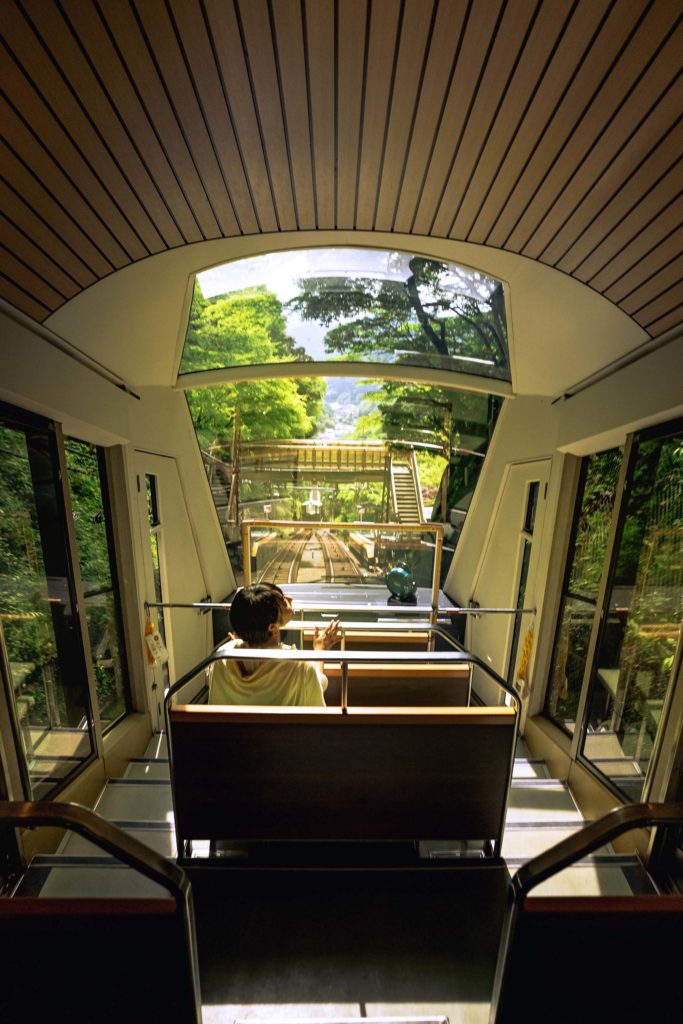
Immersed in the Edo Period, a Pilgrimage in Oyama / Aburisan Oyama-dera Temple

After about three minutes on the cable car, you will arrive at Oyama-dera station (Intermediate station). From here you can take a pilgrimage to one of the three major Buddhist temples in Kanto, established in the year 775 — a spot that has been lively with pilgrims since the Edo period. The principal deity’s iron-casted statue of Fudo-Myo-Ou Ni-doji-zo (an Acala accompanied by two children) can be viewed on any day with an “8” attached. There is a cleansing ritual you can experience here called “Kawarake-nage” in which you throw a small earthenware “kawarake” down the cliff to ward off bad luck, and if the earthenware “kawarake” passes through a ring (3-meters in diameter) at the bottom of the cliff, it will bring good luck. The earthenware is unglazed so it will immediately become natural soil and not negatively affect the environment.
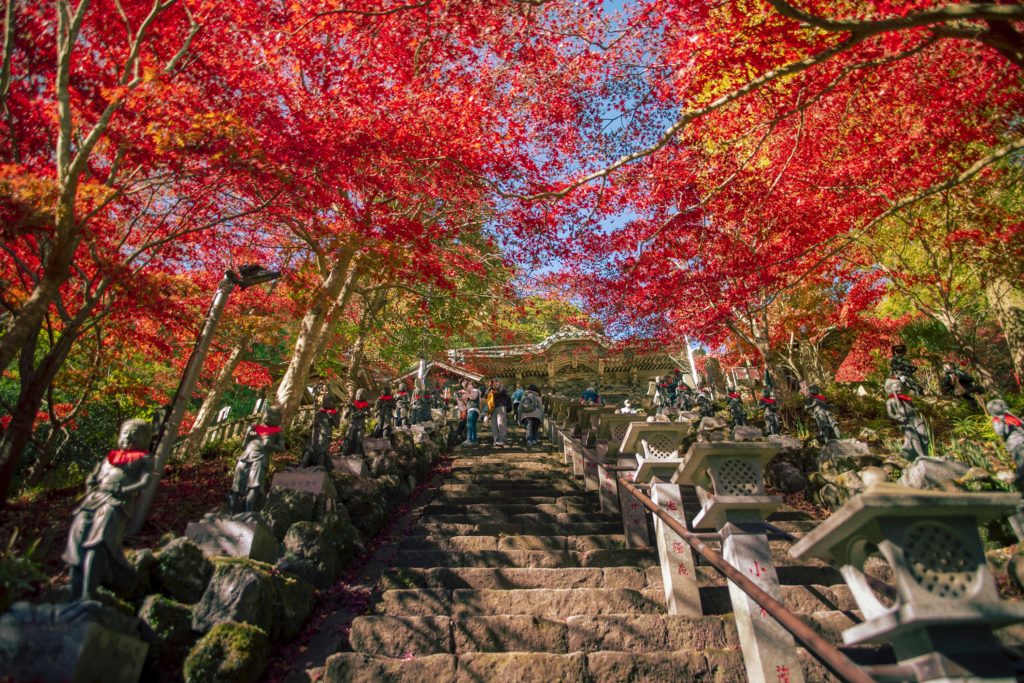
During the autumn foliage season, when the peak time arrives and maple leaves almost seem to be dyed red, from mid-to-late November there is the “Momiji Festival” during which illuminations are used to create a fantastical view.

A Superb View Featured in the Michelin Green Guide/Oyama Afuri-jinja Shrine Shimosha

Ride the cable car again for about three minutes until you reach the final stop, "Afuri-jinja Station." Oyama Afuri-jinja Shrine boasts a rich history dating back to around 97 B.C. It comprises Oyama Afuri-jinja Shrine Shimosha, nestled halfway up the mountain at an altitude of 700 meters above sea level, and Oyama Afuri-jinja Shrine Honsha, situated on the summit. The view from the top of the mountain is spectacular, but the view from the lower shrine is also superb, earning it two stars in the Michelin Green Guide.
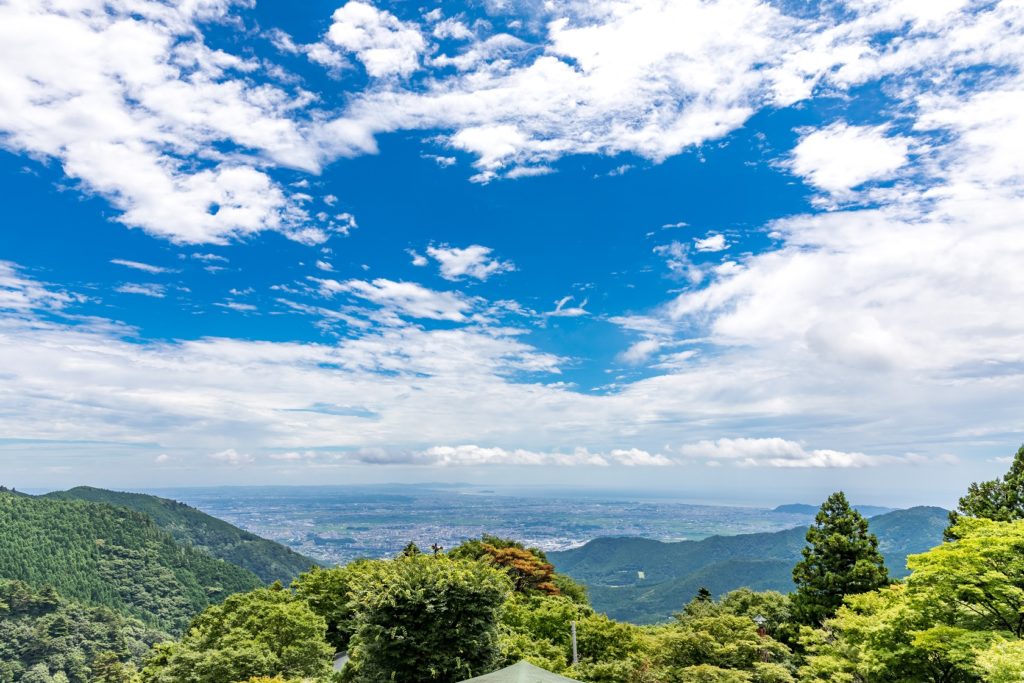
Like Oyama-dera Temple, the shrine was worshiped by the general public during the Edo period and was a popular destination for those making their pilgrimages to Mt. Oyama. Mt. Oyama is also famous for its autumn foliage, which is illuminated in November. Another highlight is the "Oyama Takigi Noh Fire Festival," a 300-year-old festival that’s held annually in early October.
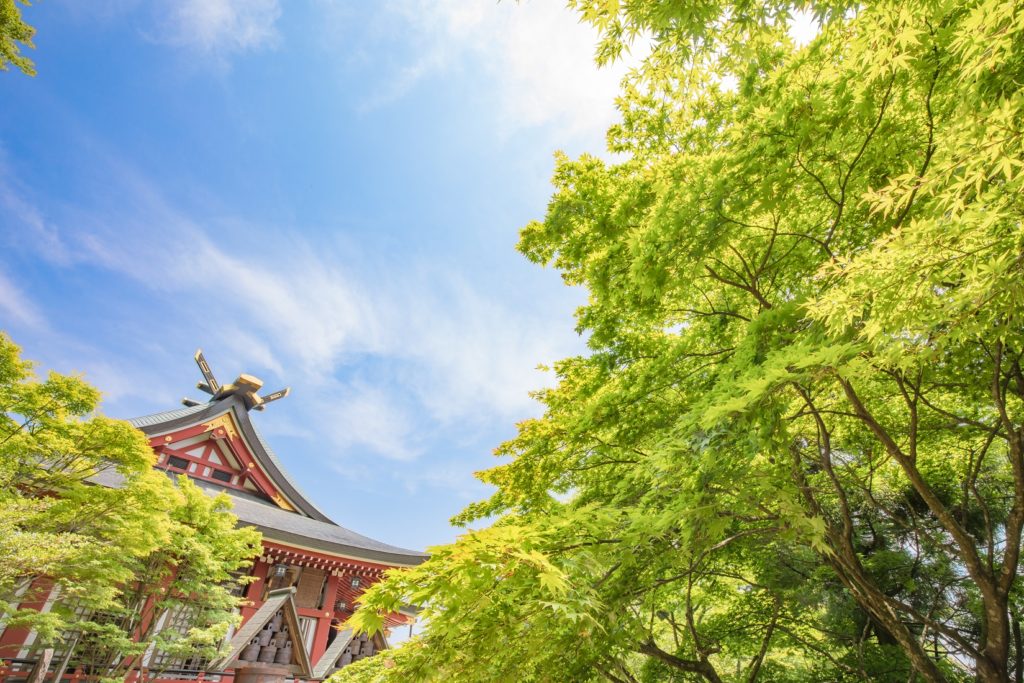
Enjoy Coffee on a Terrace with Spectacular Views / Saryo Sekison
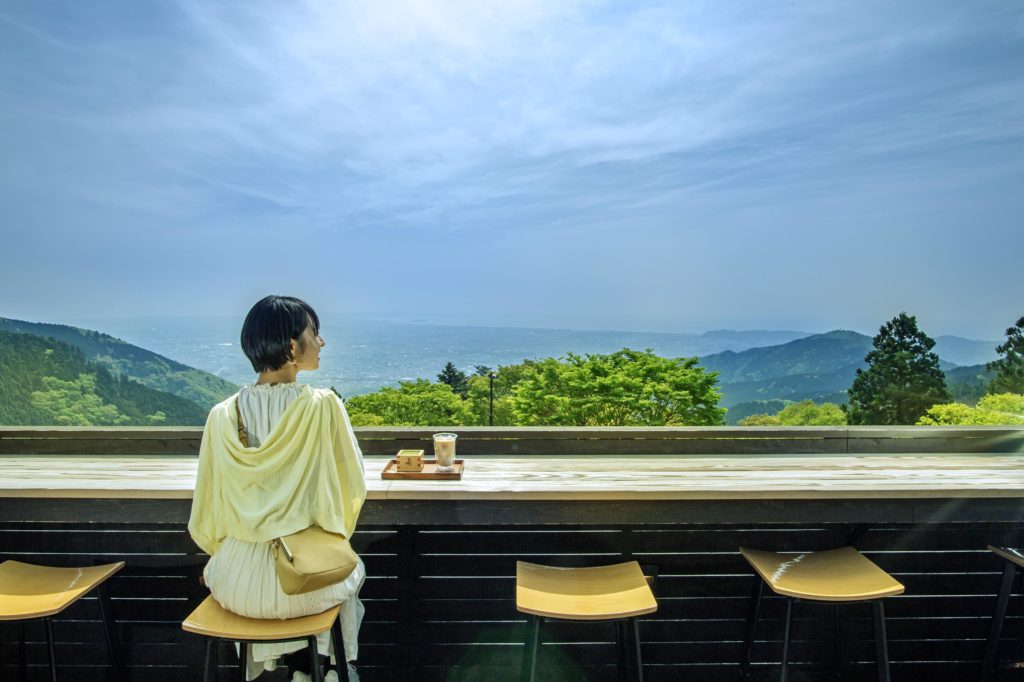
This cafe with breathtaking views is recommended if you want to take a break from your visit to Oyama Afuri-jinja Shrine. Saryo Sekison takes its name after the deity "Sekison Daigongen''. Situated within a renovated space at Oyama Afuri-jinja Shrine Shimosha, its terrace seats offer a spectacular view that was awarded two stars by the Michelin Green Guide Japan.


Popular menu items include "Masu Tiramisu," which uses coffee brewed with “gojinsui” (fresh water from the shrine grounds) and matcha green tea, and Afuri Beer that’s brewed without filtering or heating. Both will sell out if you go later in the day, so we recommend visiting in the morning!
If You Only Have One Night in Oyama, Don’t Miss the “Shukubo”! / Tougakubou
After visiting the temple, take the cable car again to go down to Oyama Cable Station at the foot of the mountain. Walk along the Koma Sando again and take a bus bound for Isehara Station from the “Oyama Cable” bus stop. If you want to stay the night, get off at the second bus stop, Atago Falls.

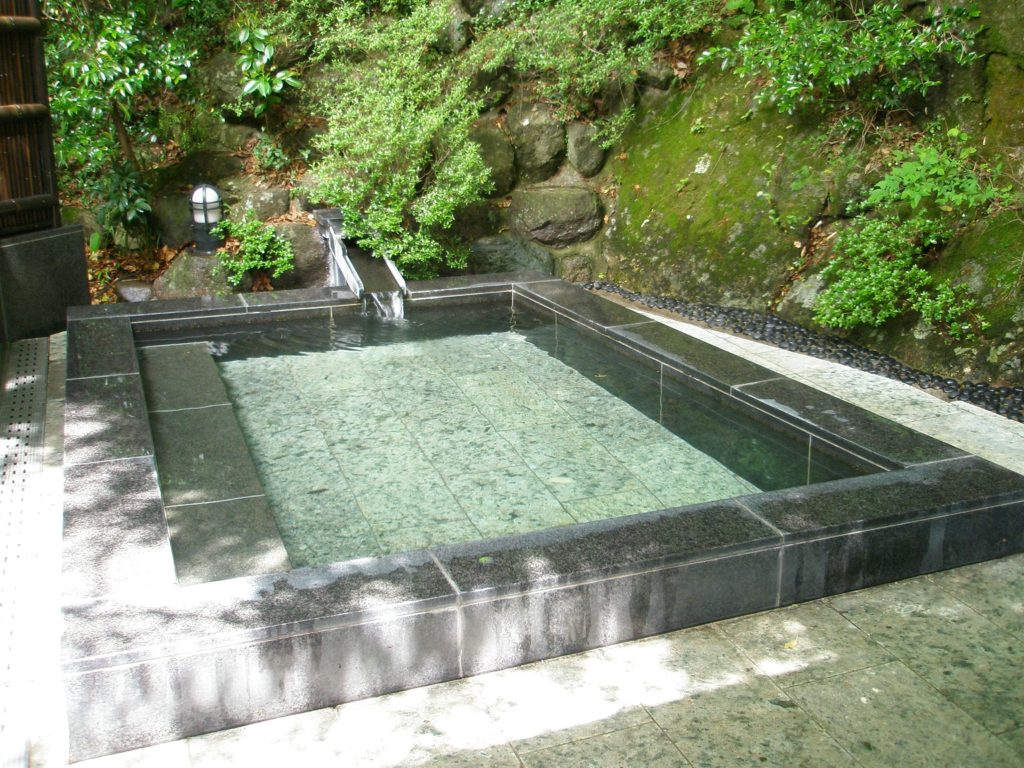
“Shukubo” are lodging facilities at temples and shrines, originally meant to accommodate monks and worshippers. Along the street where the "Atago Falls" bus stop is located, there are many ryokan (traditional inns) that still retain the appearance of these old temple lodging facilities.
Both of them offer tofu and other creative dishes that make use of local ingredients such as Oyama tofu. You can also enjoy sutra copying and tofu-making here.


After one night at a shukubo, it is time to head to your final destination.
If you enjoyed experiencing a traditional shukubo, how about visiting on your second day a shrine boasting 10,000 years of history?
Take a bus back to Isehara Station, then take a different bus from the north exit of the station for about 15 minutes. On the way to Hibita Shrine, you can enjoy views of the Tanzawa mountains and the idyllic surroundings.
A foundation whose origins might date back to the Jomon Period, more than 10,000 years ago / Sagami Province Sannomiya Hibita Shrine
Around the shrine grounds, ritual ruins from the mid-Jomon period were excavated, indicating that people were living in this area more than 10,000 years ago. According to the legend, it was founded in the 6th year of Emperor Jinmu’s rule (655 BC), with a history of around 2,600 years. From the original shrine on top of the plateau, you can enjoy nice views of the Sagami Bay.

Next to the shrine, the Sannomiya Local Museum features earthenware (daily tools) and treasures from the Jomon and Yayoi Period excavated in the surroundings, as well as around 2,000 historical documents and illustrations from the Middle Ages and Early Modern Period. It's a wonderful facility for lovers of history and folk customs.

Annual Festival (April)
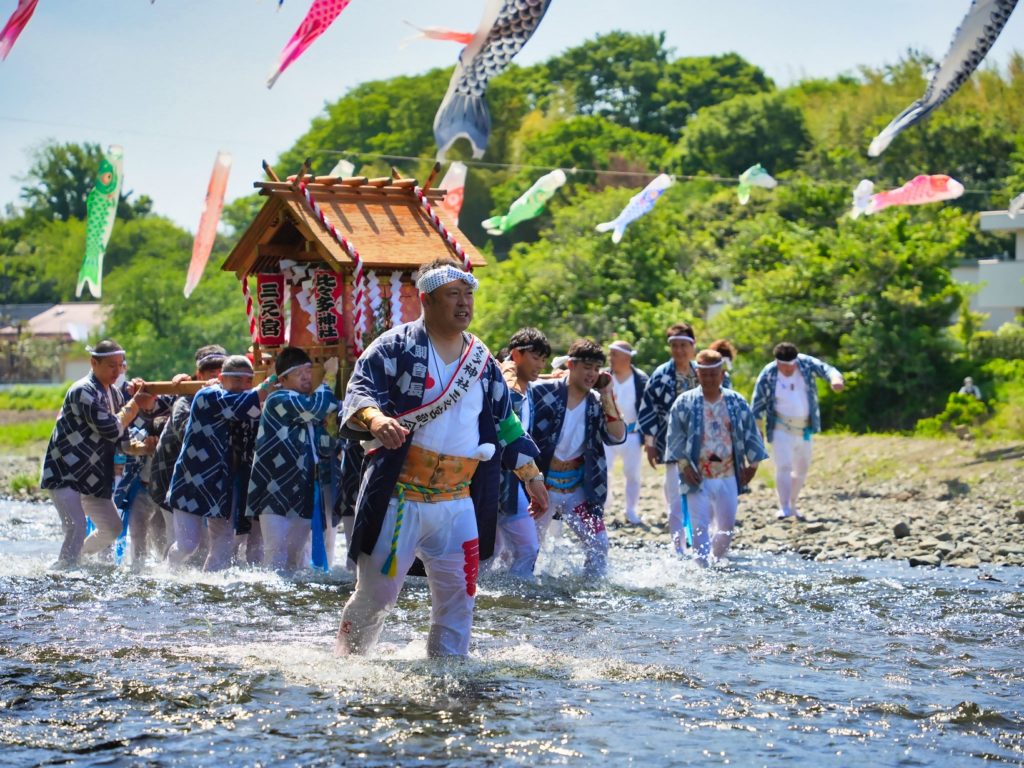
The Sagami Kounomachi Festival (May)
Once a year, during their “Annual Festival” (April), the precincts of the shrine are crowded with a rampaging portable shrine, three doll floats, popular ritual dances and lots of stalls. The The Sagami Kounomachi Festival, a festival that has been held since the Heian period, and the Magatama Festival (both in May), in which traditional music and dances are dedicated, attract many visitors.
After visiting Hibita Shrine, it is very recommended to get off at Tsurumaki Onsen Station, just one stop away from Isehara Station, and enjoy a hot spring on the same day.


